
Sarajevo: Where East Meets West
Discover Sarajevo: A captivating city where Eastern and Western cultures blend seamlessly, offering rich history, vibrant markets, and stunning mountain landscapes.
Sarajevo, the capital of Bosnia and Herzegovina, is a city that beautifully blends cultures, religions, and history. Nestled in the heart of the Balkans, Sarajevo is surrounded by lush mountains and offers a unique charm that has captivated visitors for centuries. The city's rich history is evident in its architecture, from the Ottoman-era Gazi Husrev-beg Mosque to the Austro-Hungarian style of the City Hall. Sarajevo is also known for its pivotal role in major historical events, such as the assassination of Archduke Franz Ferdinand, which sparked World War I, and the Siege of Sarajevo during the Bosnian War in the 1990s. Visitors can explore the bustling Baščaršija bazaar, where you can find traditional crafts, delicious Bosnian coffee, and mouth-watering cevapi. The city's vibrant nightlife and diverse culinary scene make it a perfect destination for food lovers and night owls alike. Whether you're strolling along the Miljacka River or hiking up the surrounding hills for a panoramic view, Sarajevo offers a rich tapestry of experiences that will leave a lasting impression.
Local tips in Sarajevo
- Visit the Baščaršija bazaar early in the morning to avoid crowds and get the best selection of goods.
- Try traditional Bosnian coffee at a local cafe; it’s an essential part of the Sarajevo experience.
- Wear comfortable walking shoes as the city's cobblestone streets and hilly terrain can be challenging.
- Check out the Sarajevo Film Festival if you're visiting in August; it's one of the largest in Southeast Europe.
- Learn a few basic phrases in Bosnian; locals appreciate the effort and it can enhance your experience.
Neighbourhoods in Sarajevo
Sarajevo: Where East Meets West
Sarajevo, the capital of Bosnia and Herzegovina, is a city that beautifully blends cultures, religions, and history. Nestled in the heart of the Balkans, Sarajevo is surrounded by lush mountains and offers a unique charm that has captivated visitors for centuries. The city's rich history is evident in its architecture, from the Ottoman-era Gazi Husrev-beg Mosque to the Austro-Hungarian style of the City Hall. Sarajevo is also known for its pivotal role in major historical events, such as the assassination of Archduke Franz Ferdinand, which sparked World War I, and the Siege of Sarajevo during the Bosnian War in the 1990s. Visitors can explore the bustling Baščaršija bazaar, where you can find traditional crafts, delicious Bosnian coffee, and mouth-watering cevapi. The city's vibrant nightlife and diverse culinary scene make it a perfect destination for food lovers and night owls alike. Whether you're strolling along the Miljacka River or hiking up the surrounding hills for a panoramic view, Sarajevo offers a rich tapestry of experiences that will leave a lasting impression.
When is the best time to go to Sarajevo?
Iconic landmarks you can’t miss
Baščaršija
Discover Sarajevo's cultural gem: Baščaršija, where history, tradition, and vibrant markets await every traveler.

Vrelo Bosne
Explore Vrelo Bosne, a stunning nature preserve near Sarajevo, featuring serene springs, lush landscapes, and scenic walking paths for a peaceful getaway.

Sebilj
Experience the charm of Sebilj, a historical landmark in Sarajevo, where Ottoman architecture meets vibrant local culture in the heart of the city.

Tunnel of Hope
Explore the Tunnel of Hope in Sarajevo, a powerful war museum showcasing the resilience of a city during the Bosnian War through its remarkable history and poignant exhibits.

Latin Bridge
Discover the historic Latin Bridge in Sarajevo, a symbol of resilience and a gateway to the city’s rich cultural heritage.

Sarajevo City Hall
Explore the stunning Sarajevo City Hall, an architectural masterpiece that embodies the rich history and cultural heritage of Bosnia and Herzegovina.

Yellow Fortress
Discover the enchanting Yellow Fortress in Sarajevo, a historical gem offering breathtaking views, rich culture, and a perfect retreat from the bustling city.

Vječna vatra
Discover the powerful symbol of peace and remembrance at Vječna vatra, an eternal flame memorial in the heart of Sarajevo.
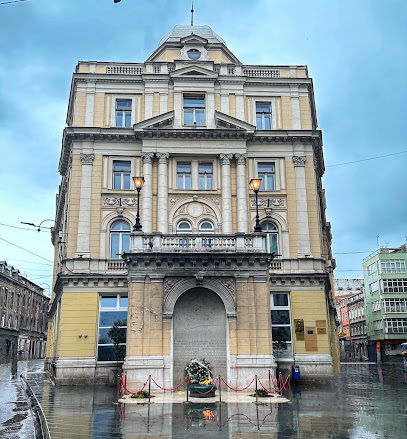
Avaz Twist Tower
Experience breathtaking views and modern architecture at Avaz Twist Tower, Sarajevo's iconic landmark and coworking space.

Pijaca Markale food market
Explore the flavors of Sarajevo at Pijaca Markale, a historical food market rich in culture and local delicacies, perfect for every foodie and traveler.

The National Museum of Bosnia and Herzegovina
Explore Bosnia's rich cultural heritage at The National Museum of Bosnia and Herzegovina, showcasing treasures from archaeology to natural sciences.
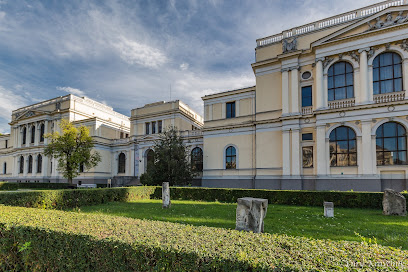
Gazi Husrev-beg Mosque
Discover the Gazi Husrev-beg Mosque, a stunning architectural gem and a cornerstone of Sarajevo's rich Islamic heritage, embodying centuries of history.

Sacred Heart Cathedral
Explore the Sacred Heart Cathedral in Sarajevo, a stunning Gothic architectural masterpiece and a significant symbol of faith in the region.

Sarajevo National Theatre
Discover the cultural heartbeat of Sarajevo at the National Theatre, where history and performing arts unite in an unforgettable experience.

Gazi Husrev-beg's Bezistan
Discover the historical Gazi Husrev-beg's Bezistan, a unique blend of shopping and Ottoman heritage in the heart of Sarajevo.

Unmissable attractions to see
Baščaršija
Discover the cultural heart of Sarajevo at Baščaršija, a historic bazaar filled with shops, eateries, and stunning Ottoman architecture.

Bosna Spring
Discover the breathtaking beauty of Bosna Spring in Sarajevo, a serene nature preserve perfect for relaxation, exploration, and cultural experiences.

Sebilj
Discover the iconic Sebilj fountain in Sarajevo's Baščaršija district, a historical landmark and cultural treasure of Bosnia and Herzegovina.

Sunnyland
Discover the excitement of Sunnyland in East Sarajevo, a family-friendly amusement park with thrilling rides, indoor fun, and tasty dining options.

Tunnel of Salvation
Explore the Tunnel of Salvation in Sarajevo, a powerful symbol of resilience and survival during the Bosnian War, showcasing the city's rich history.

Latin Bridge
Explore the Latin Bridge in Sarajevo, a historical landmark where the past meets the present amidst stunning views and vibrant culture.

Pionirska dolina
Discover Sarajevo's Pionirska Dolina, a perfect blend of nature, wildlife, and amusement for an unforgettable family outing.

Vječna vatra
Explore the Eternal Flame in Sarajevo, a moving tribute to history, resilience, and remembrance amidst the vibrant culture of the city.

Sarajevo City Hall
Immerse yourself in the history and beauty of Sarajevo City Hall, a stunning architectural gem and cultural landmark in the heart of Bosnia.

Yellow Fortress
Explore the Yellow Fortress in Sarajevo for breathtaking views, rich history, and a cultural experience that captures the essence of the city.

The National Museum of Bosnia and Herzegovina
Discover the cultural and natural treasures of Bosnia and Herzegovina at the National Museum, a must-see destination for every traveler.

Pijaca Markale food market
Experience the heart of Sarajevo at Pijaca Markale, a vibrant market brimming with local flavors, fresh produce, and traditional Bosnian delicacies.
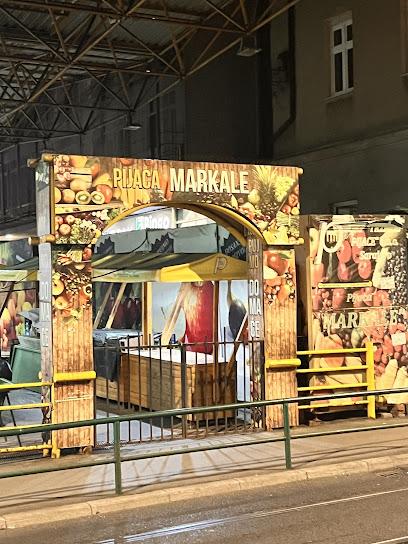
Gazi Husrev-beg Mosque
Explore the stunning Gazi Husrev-beg Mosque in Sarajevo, a masterpiece of Ottoman architecture and a key historical site in Bosnia and Herzegovina.

Stara Ćuprija Konjic
Explore Stara Ćuprija in Konjic, a historic bridge that connects the past with the stunning natural beauty of Bosnia and Herzegovina.

Stadium Grbavica
Discover the vibrant atmosphere of Stadium Grbavica in Sarajevo, a cultural hub for football fans and a gateway to local traditions.

Essential places to dine
Klopa
Experience authentic Bosnian cuisine at Klopa, where tradition meets taste in the heart of Sarajevo.

Kibe Mahala
Experience authentic Bosnian cuisine at Kibe Mahala - where tradition meets contemporary flair in the heart of Sarajevo.

Piccolo Mondo
Discover authentic Italian flavors at Piccolo Mondo in Sarajevo - where every pizza tells a story.
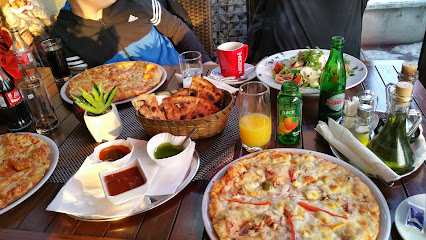
Dveri
Experience authentic Bosnian cuisine at Dveri in Sarajevo - where tradition meets flavor in every dish.

Pivnica Sarajevo
Experience authentic Bosnian cuisine at Pivnica Sarajevo - where tradition meets modern flavor in the heart of the city.

Vapiano
Discover Vapiano in Sarajevo - where fresh Italian flavors meet vibrant ambiance for an unforgettable dining experience.

Ćevabdžinica Nune
Discover authentic Bosnian flavors at Ćevabdžinica Nune, where traditional barbecue meets warm hospitality in Sarajevo.
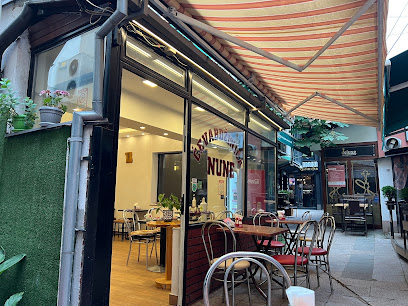
The Four Rooms of Mrs. Safija
Discover exquisite Bosnian cuisine at The Four Rooms of Mrs. Safija - where health meets flavor in an elegant setting.

Inat kuća
Discover authentic Bosnian cuisine at Inat Kuća, where tradition meets flavor in an enchanting atmosphere.

Avlija
Discover the flavors of Bosnia at Avlija - where tradition meets modernity in a cozy dining experience.
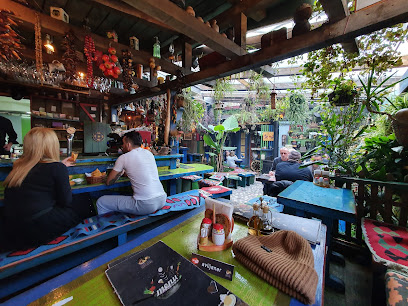
Nanina Kuhinja
Experience authentic Bosnian cuisine at Nanina Kuhinja in Sarajevo - where tradition meets taste in every dish.

Blind Tiger
Experience the vibrant flavors of Sarajevo at Blind Tiger - where local dishes meet international flair in a lively atmosphere.

Burger Bar
Discover Sarajevo's Burger Bar: Where Unique Flavors Meet Exceptional Service in Every Bite.
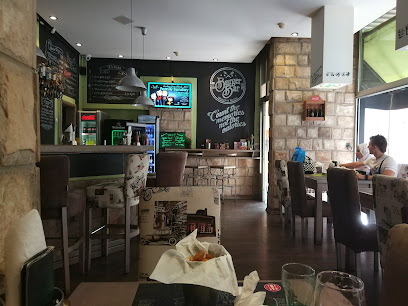
Capital Restaurant
Discover the rich flavors of Middle Eastern and Indian cuisines at Capital Restaurant in Sarajevo – where every dish tells a story.

Del Gusto
Experience the vibrant flavors of Sarajevo at Del Gusto – where barbecue meets fine dining in a welcoming atmosphere.

Markets, malls and hidden boutiques
SCC - Sarajevo City Center
Explore the vibrant Sarajevo City Center for a unique shopping and dining experience in the heart of Bosnia's capital.

Alta Shopping Center
Explore shopping, dining, and entertainment at the Alta Shopping Center – Sarajevo's premier shopping destination for every traveler.

Merkur Shopping Centar Otoka
Experience shopping, dining, and culture at Merkur Shopping Centar Otoka, a vibrant hub in Sarajevo perfect for tourists and locals alike.

Importanne Shopping Centar
Experience Sarajevo's vibrant shopping scene at Importanne Shopping Centar, where local culture meets modern retail and dining.

Magaza
Discover the heart of Sarajevo at Magaza, a unique gift shop blending local craftsmanship, music, and cultural education.

Bosnian Kingdom Shop
Explore the Bosnian Kingdom Shop for authentic clothing and souvenirs, reflecting the rich cultural heritage of Bosnia in the heart of Sarajevo.
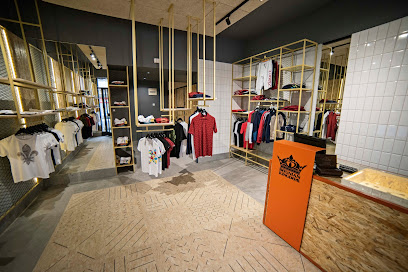
Bazerdžan Baščaršija | Concept Store, Fashion, Souvenir, Gift Shop
Explore Bazerdžan Baščaršija in Sarajevo for unique fashion, souvenirs, and gifts that embody Bosnian culture and craftsmanship.
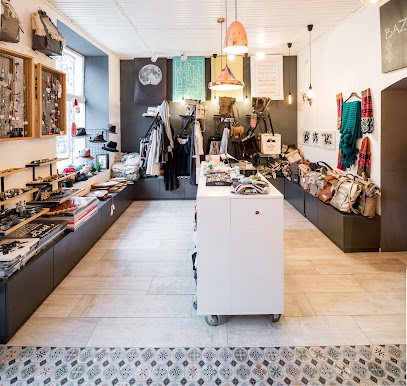
Bershka
Explore contemporary fashion at Bershka in Sarajevo, featuring stylish apparel and accessories for every trendsetter.

AS3
Discover unique handmade souvenirs in Sarajevo at AS3, where every purchase supports local artisans and tells a story of Bosnian culture.

Tobacco Gift Shop
Explore the Tobacco Gift Shop in Sarajevo for unique tobacco products and authentic local gifts, capturing the spirit of Bosnia and Herzegovina.

Mojwebshop - Online Shop BiH
Explore Mojwebshop in Sarajevo for trendy fashion accessories that capture the essence of local style and culture.

Royal Taste Sarajevo
Explore the heart of Sarajevo through unique gifts and local crafts at Royal Taste Sarajevo, where every item tells a story.

TIP TOP shop - second hand & outlet
Discover unique fashion treasures and sustainable shopping at TIP TOP Shop, Sarajevo's charming second-hand outlet.
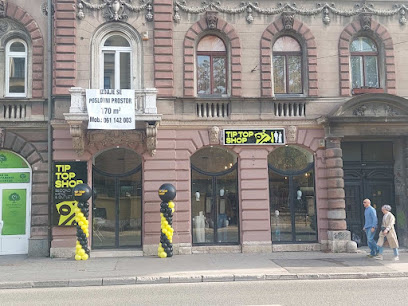
Jonze
Explore the heart of Sarajevo at Jonze, where unique gifts and local artistry come together to create unforgettable souvenirs.

Souvenir Shop Coppercraft Baščaušević
Discover the essence of Sarajevo at Souvenir Shop Coppercraft Baščaušević, where local artistry meets authentic craftsmanship in every unique piece.

Essential bars & hidden hideouts
Gastro Pub Vučko
Discover Gastro Pub Vučko, a culinary haven in Sarajevo blending traditional Bosnian flavors with contemporary cooking in a vibrant gastropub atmosphere.

Tesla
Experience the vibrant atmosphere and local charm of Tesla, a premier pub in the heart of Sarajevo, perfect for unwinding with friends.
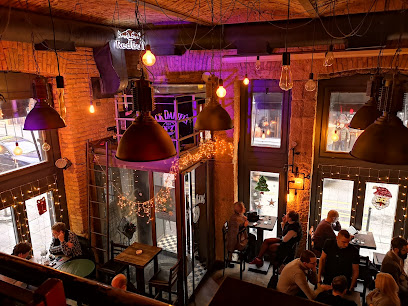
Celtic Pub
Experience the lively spirit of Sarajevo at Celtic Pub, where local music and a warm atmosphere await every visitor.

City Pub
Discover the vibrant nightlife of Sarajevo at City Pub, a lively bar offering a diverse drink menu and a cozy atmosphere for all visitors.

Zlatna ribica
Experience Sarajevo's vibrant nightlife at Zlatna Ribica, a unique bar and café with a cozy atmosphere and an extensive drink menu.
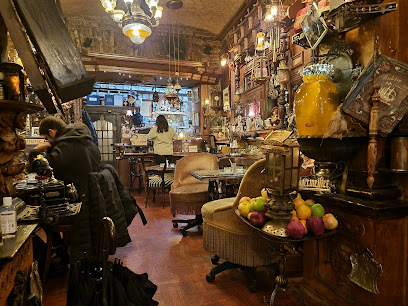
Freaky's Pub
Experience the lively atmosphere and local flavors at Freaky's Pub in Sarajevo, the perfect spot for drinks and entertainment.

Gastro pub Fabrika
Discover the vibrant flavors of Sarajevo at Gastro Pub Fabrika, where tradition meets modern culinary creativity.

People's
Experience the vibrant atmosphere of Sarajevo at People's Bar, where locals and travelers come together over drinks and laughter.

Viking Pub
Discover Sarajevo’s vibrant nightlife at Viking Pub, where local beers, hearty meals, and a lively atmosphere await you.

Mon Cheri Pub
Discover the lively atmosphere of Mon Cheri Pub in Sarajevo, a perfect spot for drinks and socializing in the heart of the city.

Barometar
Experience the perfect blend of culture and relaxation at Barometar, Sarajevo's beloved bar and cafe offering delightful drinks and a cozy ambiance.
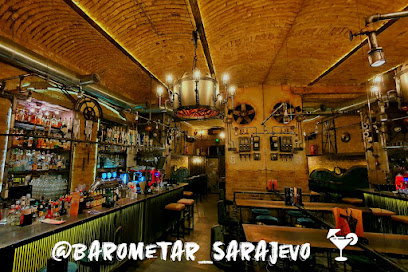
Aperitivo bar
Discover the flavors of Sarajevo at Aperitivo Bar, where cozy vibes meet expertly crafted cocktails in a charming setting.

Deco Bar
Experience the vibrant atmosphere of Deco Bar in Sarajevo, where exquisite drinks and local culture blend seamlessly in a chic setting.

Red Door Pub
Discover the heart of Sarajevo at Red Door Pub, where local charm meets a vibrant atmosphere for an unforgettable night out.
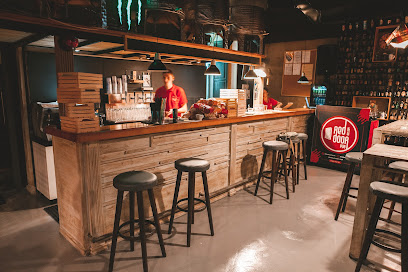
Taylor's Pub
Experience the best of Sarajevo's nightlife at Taylor's Pub, where delicious gastropub cuisine meets a lively atmosphere.
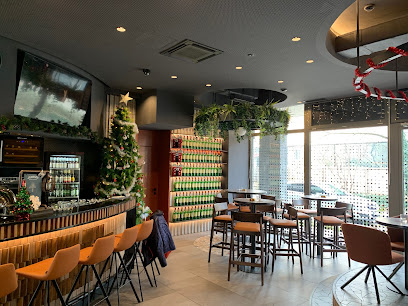
Local Phrases
-
- HelloZdravo
[Zdrah-vo] - GoodbyeDoviđenja
[Doh-vee-jen-ya] - YesDa
[Dah] - NoNe
[Neh] - Please/You're welcomeMolim vas
[Moh-leem vahs] - Thank youHvala
[Hvah-la] - Excuse me/SorryIzvinite
[Eez-vee-nee-teh] - How are you?Kako si?
[Kah-koh see?] - Fine. And you?Dobro. A ti?
[Doh-bro. Ah tee?] - Do you speak English?Govorite li engleski?
[Go-vo-ree-teh lee eng-les-kee?] - I don't understandNe razumijem
[Neh rah-zoo-mee-yem]
- HelloZdravo
-
- I'd like to see the menu, pleaseMolim vas, želio bih vidjeti meni
[Moh-leem vahs, zheh-lee-oh bee vee-dyeh-tee meh-nee] - I don't eat meatJa ne jedem meso
[Yah neh yeh-dem meh-so] - Cheers!Živjeli!
[Zhee-vee-lee] - I would like to pay, pleaseŽelim platiti, molim vas
[Zheh-leem pla-tee-tee, moh-leem vahs]
- I'd like to see the menu, pleaseMolim vas, želio bih vidjeti meni
-
- Help!Upomoć!
[Oo-poh-mohch] - Go away!Idi odavde!
[Ee-dee oh-dav-deh] - Call the Police!Pozovite policiju!
[Poh-zoh-vee-teh po-lee-tsee-yoo] - Call a doctor!Pozovite doktora!
[Poh-zoh-vee-teh dohk-toh-rah] - I'm lostIzgubio/la sam se
[Eez-goo-byoh/lah sahm seh] - I'm illBolestan/na sam
[Boh-leh-stahn/nah sahm]
- Help!Upomoć!
-
- I'd like to buy...Želim kupiti...
[Zheh-leem koo-pee-tee] - I'm just lookingSamo gledam
[Sah-moh gleh-dam] - How much is it?Koliko košta?
[Koh-lee-koh koh-stah?] - That's too expensiveTo je previše skupo
[Toh yeh preh-vee-sheh skoo-poh] - Can you lower the price?Možete li spustiti cijenu?
[Moh-zheh-teh lee spoos-tee-tee tsee-yeh-noo?]
- I'd like to buy...Želim kupiti...
-
- What time is it?Koliko je sati?
[Koh-lee-koh yeh sah-tee?] - It's one o'clockJedan je sat
[Yeh-dahn yeh saht] - Half past (10)Pola (deset)
[Poh-lah (deh-set)] - MorningJutro
[Yoo-troh] - AfternoonPopodne
[Poh-pohd-neh] - EveningVeče
[Veh-cheh] - YesterdayJuče
[Yoo-cheh] - TodayDanas
[Dah-nahs] - TomorrowSutra
[Soo-trah] - 1Jedan
[Yeh-dahn] - 2Dva
[Dvah] - 3Tri
[Tree] - 4Četiri
[Cheh-tee-ree] - 5Pet
[Peh-t] - 6Šest
[Shehst] - 7Sedam
[Seh-dahm] - 8Osam
[Oh-sahm] - 9Devet
[Deh-vet] - 10Deset
[Deh-set]
- What time is it?Koliko je sati?
-
- Where's a/the...?Gdje je...
[Gdyeh yeh] - What's the address?Koja je adresa?
[Koh-ya yeh ah-deh-sah?] - Can you show me (on the map)?Možete li mi pokazati (na mapi)?
[Moh-zheh-teh lee mee poh-kah-zah-tee (nah mah-pee)?] - When's the next (bus)?Kada je sljedeći (autobus)?
[Kah-dah yeh slew-yed-eh-chee (ow-toh-boos)?] - A ticket (to ....)Jednu kartu (do ...)
[Yehd-noo kahr-too (doh)]
- Where's a/the...?Gdje je...
History of Sarajevo
-
Sarajevo was founded by the Ottomans in 1461 when the first Ottoman governor, Isa-Beg Ishaković, established the city's core, including its mosque, marketplace, public bath, and a governor's palace. The city quickly became a significant center of trade and culture in the Balkans. Gazi Husrev-bey, one of the city's most notable figures, further developed Sarajevo in the 16th century by building the Gazi Husrev-bey Mosque, which remains a prominent landmark today.
-
The Austro-Hungarian Empire annexed Bosnia and Herzegovina in 1878, bringing significant changes to Sarajevo. The empire introduced Western architectural styles, building new structures such as the Sarajevo City Hall (Vijećnica) and the Sarajevo National Theatre. The period saw the modernization of the city's infrastructure and the establishment of public services, which contributed to Sarajevo's transformation into a modern European city.
-
On June 28, 1914, Sarajevo became the focal point of global attention when Gavrilo Princip, a Bosnian Serb nationalist, assassinated Archduke Franz Ferdinand of Austria and his wife, Sophie. This event triggered a series of political maneuvers that led to the outbreak of World War I. The assassination took place on the Latin Bridge, a historic location that still attracts visitors interested in this pivotal moment in history.
-
Between the two World Wars, Sarajevo experienced significant political and social changes. The Kingdom of Yugoslavia was formed in 1918, and Sarajevo became a part of it. During World War II, the city was occupied by Axis forces and later became a battleground for various resistance movements. The Jewish community, which had been an integral part of Sarajevo's social fabric, was decimated during the Holocaust.
-
Sarajevo gained international acclaim when it hosted the 1984 Winter Olympics. The event showcased the city's ability to bring together diverse cultures and highlighted its scenic beauty and rich history. The Olympic legacy is still evident in the city's sports facilities and the memories cherished by its residents.
-
The Siege of Sarajevo, which lasted from April 1992 to February 1996, was one of the longest sieges in modern history. During the Bosnian War, Sarajevo was subjected to intense shelling and sniper attacks by Bosnian Serb forces. The siege resulted in severe hardship for the city's residents, with thousands of casualties and widespread destruction. Despite the devastation, the people of Sarajevo demonstrated remarkable resilience and solidarity.
-
Following the end of the Bosnian War, Sarajevo embarked on a journey of reconstruction and healing. International aid and local efforts have helped restore many of the city's historic buildings and infrastructure. Today, Sarajevo is a vibrant, multicultural city that proudly showcases its unique blend of Ottoman, Austro-Hungarian, and Yugoslav heritage. The city's dynamic arts scene, thriving café culture, and rich history continue to attract visitors from around the world.
Sarajevo Essentials
-
Sarajevo is serviced by Sarajevo International Airport (SJJ), located approximately 9 kilometers southwest of the city center. The airport hosts flights from major European cities and a few intercontinental routes. From the airport, you can take a taxi or use the airport shuttle service to reach the city center. Alternatively, you can arrive by train or bus from other parts of Bosnia and Herzegovina or neighboring countries. The central train and bus stations are located close to each other in the city, providing easy access to public transport.
-
Sarajevo has a well-developed public transportation system, including trams, buses, and trolleybuses. Tickets can be purchased at kiosks or directly from the driver. Taxis are also readily available and relatively inexpensive, but always ensure the meter is running. For a more flexible option, consider renting a car, though be mindful of parking restrictions in the city center. Walking is an excellent way to explore the old town (Baščaršija) and other central areas.
-
The official currency in Bosnia and Herzegovina is the Bosnia and Herzegovina Convertible Mark (BAM or KM). Credit cards are widely accepted in hotels, restaurants, and larger shops, but it is advisable to carry some cash for smaller establishments and markets. ATMs are plentiful throughout Sarajevo, and currency exchange services are available at the airport, banks, and exchange offices.
-
Sarajevo is generally a safe city for tourists, but standard precautions should be taken. Avoid walking alone at night in unfamiliar areas, and be cautious with your belongings in crowded places. Petty crimes such as pickpocketing can occur, particularly in tourist hotspots like Baščaršija and public transport. Neighborhoods like Ciglane and Marijin Dvor are usually safe, but it's best to stay vigilant regardless of where you are.
-
In case of emergency, dial 112 for immediate assistance, which connects you to police, fire, and medical services. Major hospitals in Sarajevo include the University Clinical Center Sarajevo and General Hospital Prim. Dr. Abdulah Nakaš. Pharmacies are widespread and usually well-stocked. It is advisable to have travel insurance that covers medical emergencies.
-
Fashion: Do dress modestly, especially when visiting religious sites. Avoid overly casual or revealing clothing in such contexts. Religion: Do respect local customs and traditions. When visiting mosques, cover your head (for women) and remove shoes. Public Transport: Do be respectful and offer your seat to elderly passengers. Don’t eat or drink on public transport. Greetings: Do greet people with a handshake. In more formal settings, a slight bow of the head is a sign of respect. Eating & Drinking: Do try local delicacies and accept food offerings graciously. Don’t refuse hospitality, as it is considered impolite.
-
To experience Sarajevo like a local, visit the Markale Market where you can buy fresh produce and local goods. Engage with locals in cafes; they are often friendly and eager to share stories about the city’s history. Don’t miss the opportunity to visit the Yellow Fortress for a panoramic view of the city. For a unique experience, take a leisurely walk along the Miljacka River and stop by the historic Latin Bridge.
Trending Landmark in Sarajevo
Nearby Cities to Sarajevo
-
Things To Do in Zenica
-
Things To Do in Mostar
-
Things To Do in Tuzla
-
Things To Do in Jajce
-
Things To Do in Nikšić
-
Things To Do in Trebinje
-
Things To Do in Makarska
-
Things To Do in Dubrovnik
-
Things To Do in Banja Luka
-
Things To Do in Perast
-
Things To Do in Herceg Novi
-
Things To Do in Tivat
-
Things To Do in Kotor
-
Things To Do in Hvar
-
Things To Do in Split


















